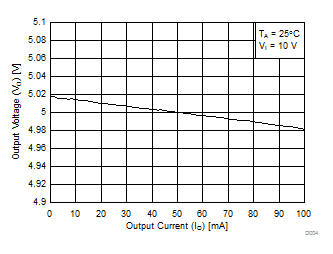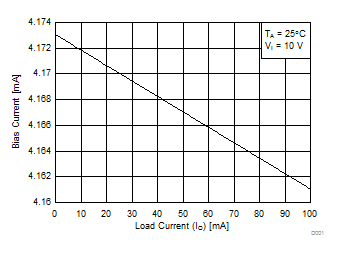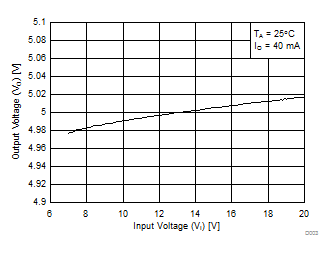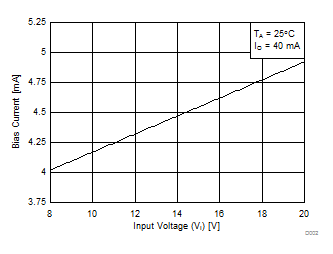SLVS010X january 1976 – june 2023 UA78L
PRODUCTION DATA
- 1
- 1 Features
- 2 Applications
- 3 Description
- 4 Revision History
- 5 Pin Configuration and Functions
-
6 Specifications
- 6.1 Absolute Maximum Ratings
- 6.2 ESD Ratings
- 6.3 Recommended Operating Conditions
- 6.4 Thermal Information
- 6.5 Electrical Characteristics: UA78L02 (Legacy Chip Only)
- 6.6 Electrical Characteristics: UA78L033 (New Chip Only)
- 6.7 Electrical Characteristics: UA78L05 (Both Legacy and New Chip)
- 6.8 Electrical Characteristics: UA78L12 (Both Legacy and New Chip)
- 6.9 Electrical Characteristics: UA78L06 (Legacy Chip Only)
- 6.10 Electrical Characteristics: UA78L08 (Legacy Chip Only)
- 6.11 Electrical Characteristics: UA78L09 (Legacy Chip Only)
- 6.12 Electrical Characteristics: UA78L10 (Legacy Chip Only)
- 6.13 Electrical Characteristics: UA78L15 (Both Legacy and New Chip)
- 6.14 Typical Characteristics
- 7 Detailed Description
- 8 Applications and Implementation
- 9 Device and Documentation Support
- 10Mechanical, Packaging, and Orderable Information
Package Options
Refer to the PDF data sheet for device specific package drawings
Mechanical Data (Package|Pins)
- D|8
- PK|3
- LP|3
Thermal pad, mechanical data (Package|Pins)
- PK|3
Orderable Information
6.14 Typical Characteristics
at specified junction temperature TJ = 25 °C, VI = 10 V, VO = 5 V, CIN = 0.33 µF, COUT = 0.1µF, and IO = 1 mA (unless otherwise noted)




| IO = 40 mA |

| IO = 40 mA |



| IO = 40 mA |


| VO = 90% of VO (typ) |

| VI = 23 V, VO = 15 V |

| VI = 23 V, VO = 15 V |

| IO = 40 mA |


| IO = 40 mA |




| IO = 40 mA |

| IO = 40 mA |

| VO = 0 V |

| VI = 9 V, VO = 3.3 V |

| VI = 9 V, VO = 3.3 V |